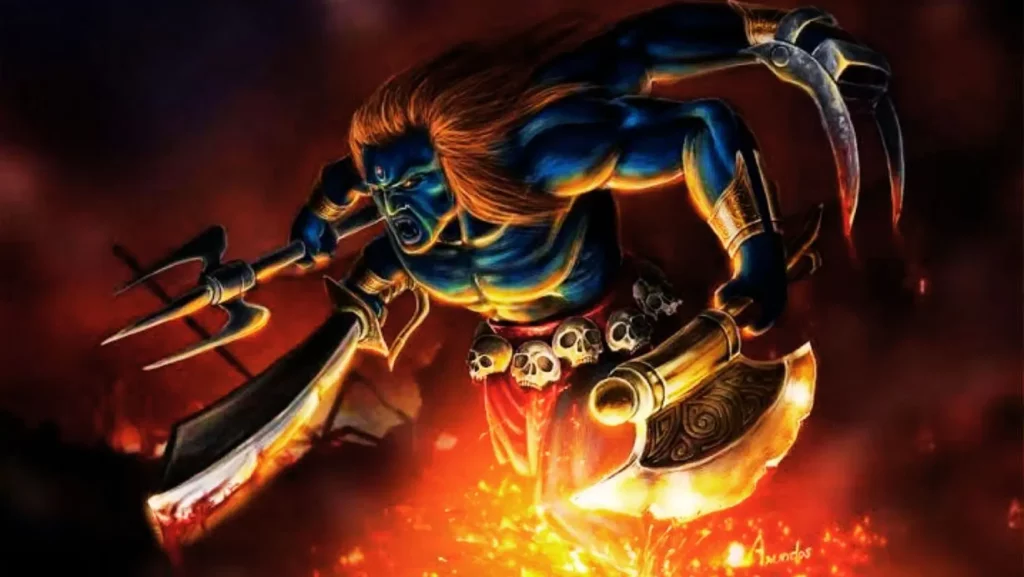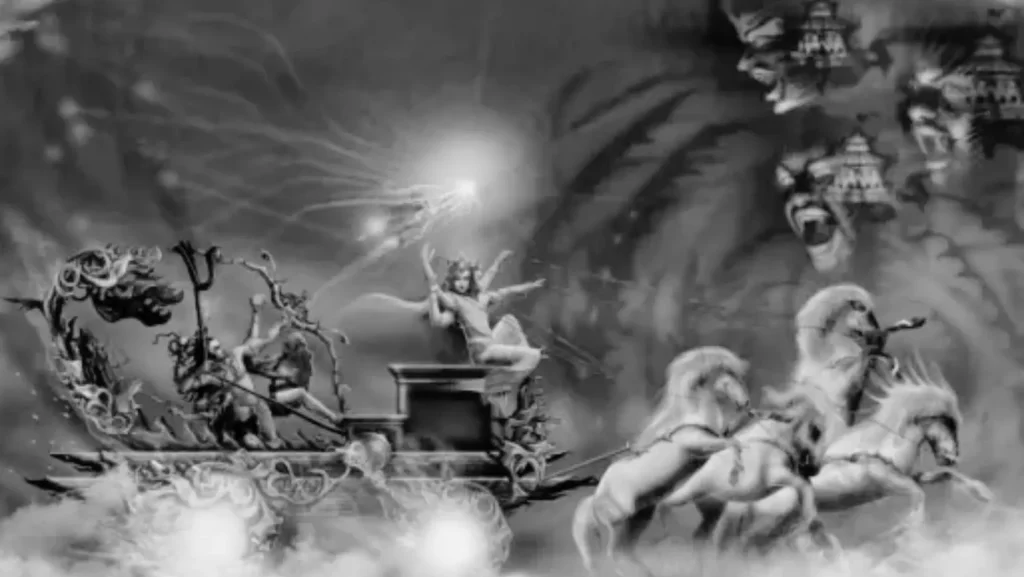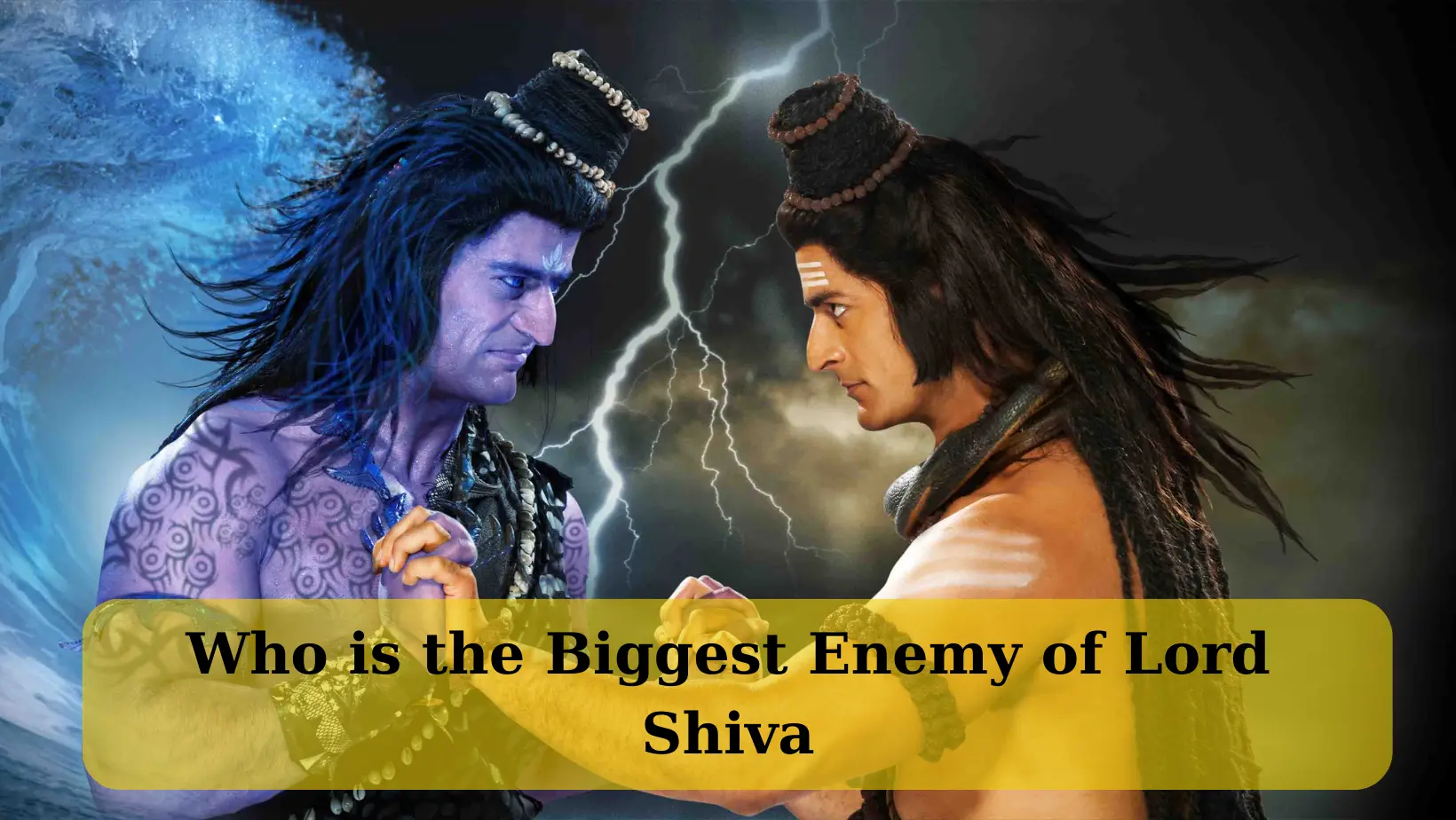Lord Shiva, one of Hinduism’s primary deities, embodies the complex interplay of destruction and regeneration, representing the cycle of life, death, and reincarnation. His portrayal goes from quiet ascetic to cosmic dancer, revealing unique traits such as the third eye of wisdom and the crescent moon representing cosmic harmony.
The Conventional Adversaries
Throughout the rich fabric of Hindu mythology, various stories describe Lord Shiva engaging in epic fights with powerful opponents, each embodying a different facet of cosmic duality:
Jalandhara:

Jalandhara, born from Lord Shiva’s rage, depicts pride and ambition. As a great king of the Asuras, his ambition for domination led to severe battles with Shiva, eventually terminating in his downfall through a brutal battle with Veerabhadra, a warrior spawned from Shiva himself.
Tripurasura:

This demon king, with his three invincible cities of gold, silver, and iron, upended the cosmic order. Lord Shiva, riding Nandi, demolished Tripurasura’s cities with a single arrow, putting an end to his ambition and vanity.
Tarakasura, a symbol of arrogance and strength, is defeated by Kartikeya, Lord Shiva’s son, illustrating the triumph of good over evil.
Ravana and Andhaka:
These demons represent unbridled ambition and the emergence of undesirable traits from within, respectively. Their stories highlight not only physical conflicts, but also the inner effort to overcome personal demons and attain spiritual progress.
Ignorance (Avidya):
In philosophical terms, Lord Shiva’s greatest foe is not a divinity or monster, but ‘Ignorance’ itself. Shiva, the personification of wisdom, battles ignorance and guides souls to enlightenment and insight.
The Philosophical Adversary: Ignorance
Moving beyond literal readings, Hindu philosophy offers a profound insight. It is argued that Lord Shiva, the highest reality, does not have a conventional enemy since he transcends worldly disputes and dualities. If one had to contemplate his greatest foe, it would be ‘Ignorance’ or ‘Avidya.’ Lord Shiva’s meditation and cosmic dance symbolize the struggle against ignorance, guiding souls from darkness to enlightenment and from illusion to reality.
Conclusion
While mythological narratives introduce a multitude of powerful opponents such as Jalandhara, Tripurasura, and others, Hinduism’s philosophical perspective lifts the discourse to a more fundamental level, portraying ‘Ignorance’ as the ultimate foe. This dynamic image highlights Lord Shiva’s depth and complexity, transforming him from a deity of physical prowess to a symbol of cosmic wisdom and spiritual emancipation.
FAQs about the Biggest Enemy of Lord Shiva
In Hindu mythology, who is considered Lord Shiva’s greatest enemy?
Ans:- Lord Shiva’s main opponents are Jalandhara, Tripurasura, Tarakasura, Ravana, and Andhaka, each embodying unique cosmological and moral obstacles.
What does Jalandhara represent in his struggle with Lord Shiva?
Ans:- Jalandhara represents pride and unbridled ambition. The story finishes in a battle with Lord Shiva, demonstrating the triumph of humility and divine strength over arrogance.
How did Lord Shiva destroy Tripurasura?
Ans:- Lord Shiva destroyed Tripurasura by destroying his three impenetrable cities with a single arrow, symbolizing the end of ego and ignorance.
What is the philosophical perspective of Lord Shiva’s main adversary?
Ans:- According to philosophy, Lord Shiva’s biggest enemy is ‘Ignorance’ or ‘Avidya’. Shiva represents the cosmic power that overcomes ignorance and leads to enlightenment.
Are Ravana and Andhaka considered adversaries of Lord Shiva?
Ans:- Ravana and Andhaka are considered Lord Shiva’s foes. Ravana signifies unbridled ambition, whereas Andhaka represents internal darkness and fighting one’s inner demons.
